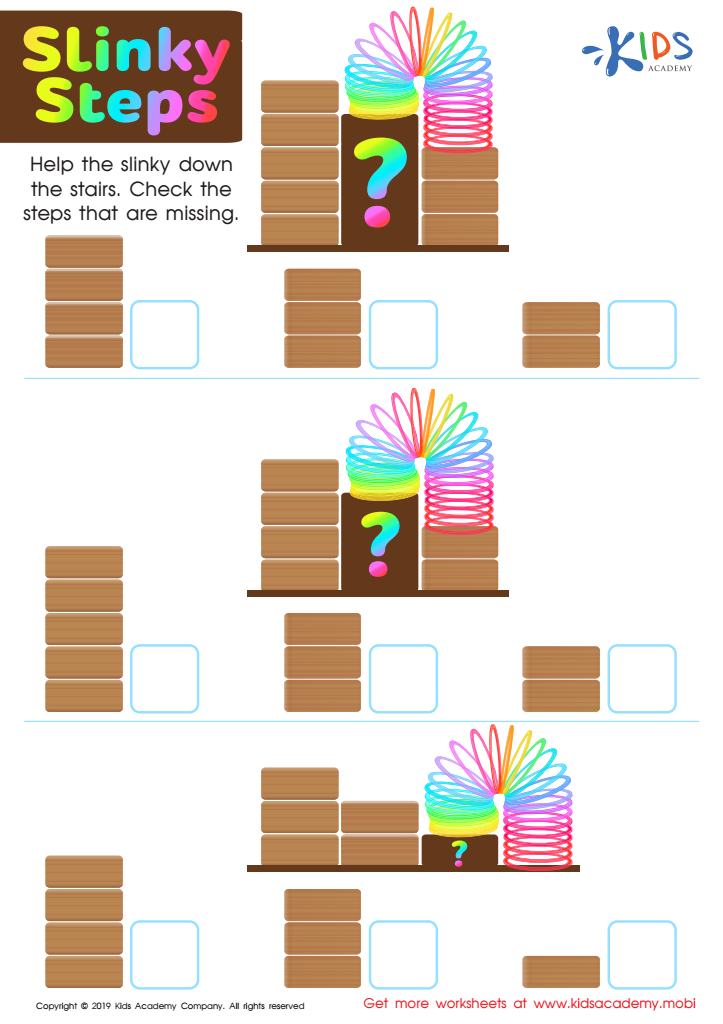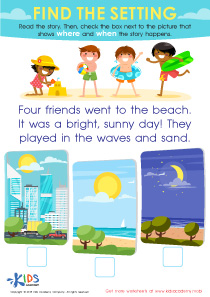Understanding patterns Easy Worksheets for Ages 4-7
3 filtered results
-
From - To
Explore our "Understanding Patterns Easy Worksheets" designed for children ages 4-7. These engaging worksheets help young learners identify, create, and extend patterns in a fun and interactive way. With colorful visuals and age-appropriate activities, kids will enjoy practicing essential skills that lay the foundation for critical thinking and problem-solving. The worksheets promote cognitive development while keeping learning enjoyable. Perfect for both classroom use and at-home learning, our resources cater to early learners looking to enhance their understanding of patterns. Help your child thrive in their educational journey with our easy and accessible worksheets today!


Slinky Steps Worksheet


Patchwork Math Worksheet
Understanding patterns is an essential skill for children aged 4 to 7, serving as a foundation for future learning in mathematics, science, and critical thinking. Parents and teachers should care about this concept because recognizing and creating patterns enhance problem-solving skills and cognitive development.
In early childhood, children encounter patterns in various forms—colors, shapes, numbers, and even sounds. Engaging with patterns helps them develop analytical thinking, as they learn to identify sequences and make predictions based on given information. This ability to anticipate what comes next not only builds confidence but also lays the groundwork for more complex mathematical concepts, such as addition, subtraction, and eventually algebra.
Additionally, understanding patterns fosters creativity. Children can express themselves through art and music by exploring rhythm and design. It encourages observational skills, as they learn to notice similarities and differences in their environment, contributing to language development and vocabulary.
Moreover, when parents and teachers emphasize pattern recognition, it creates a fun, interactive learning environment, making education enjoyable. This engagement boosts children's enthusiasm for learning and nurtures a lifelong love for inquiry and exploration. Thus, supporting children’s understanding of patterns is vital for their overall growth and development.
 Assign to My Students
Assign to My Students






















